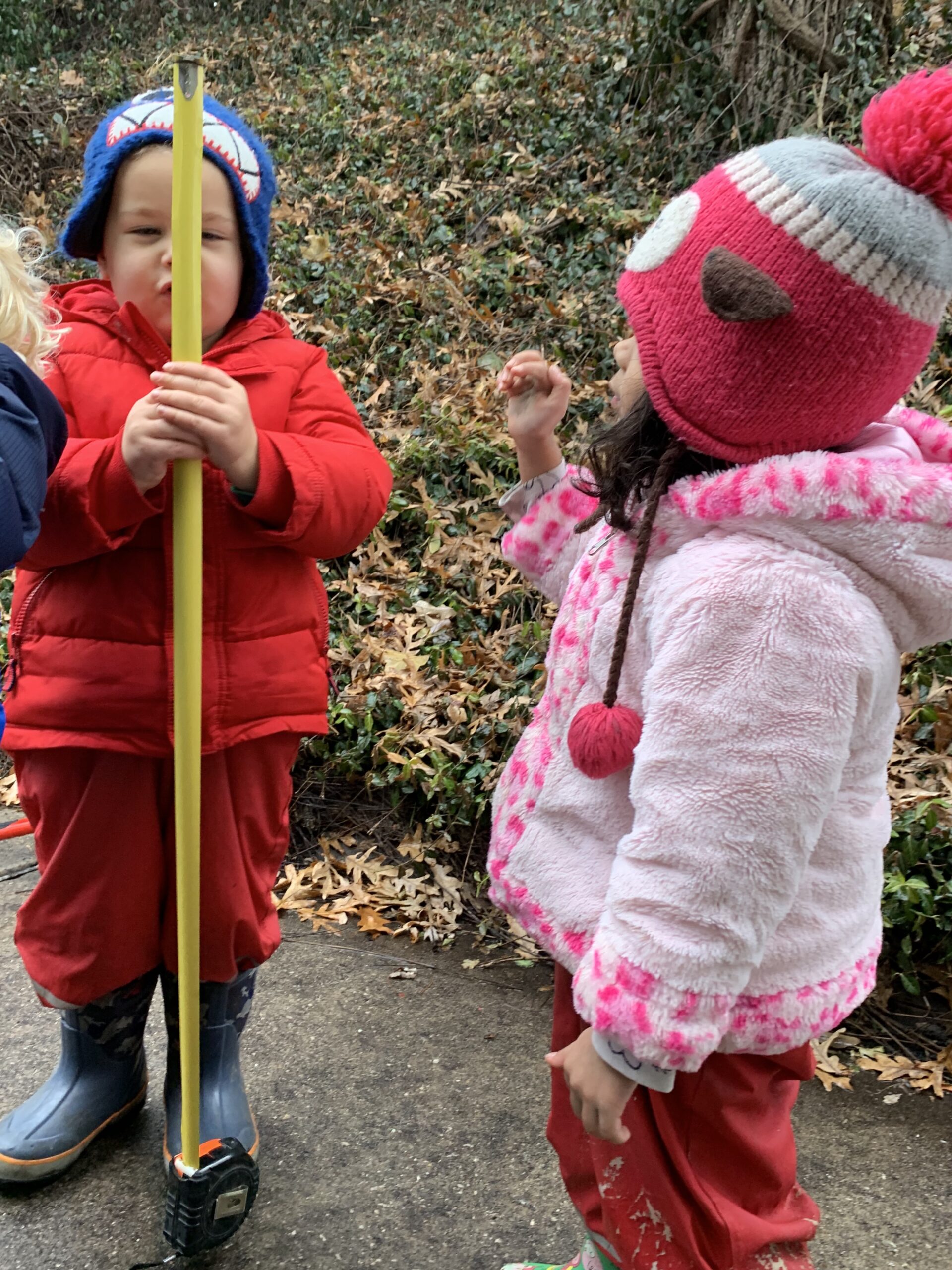
Measure Up With STEM
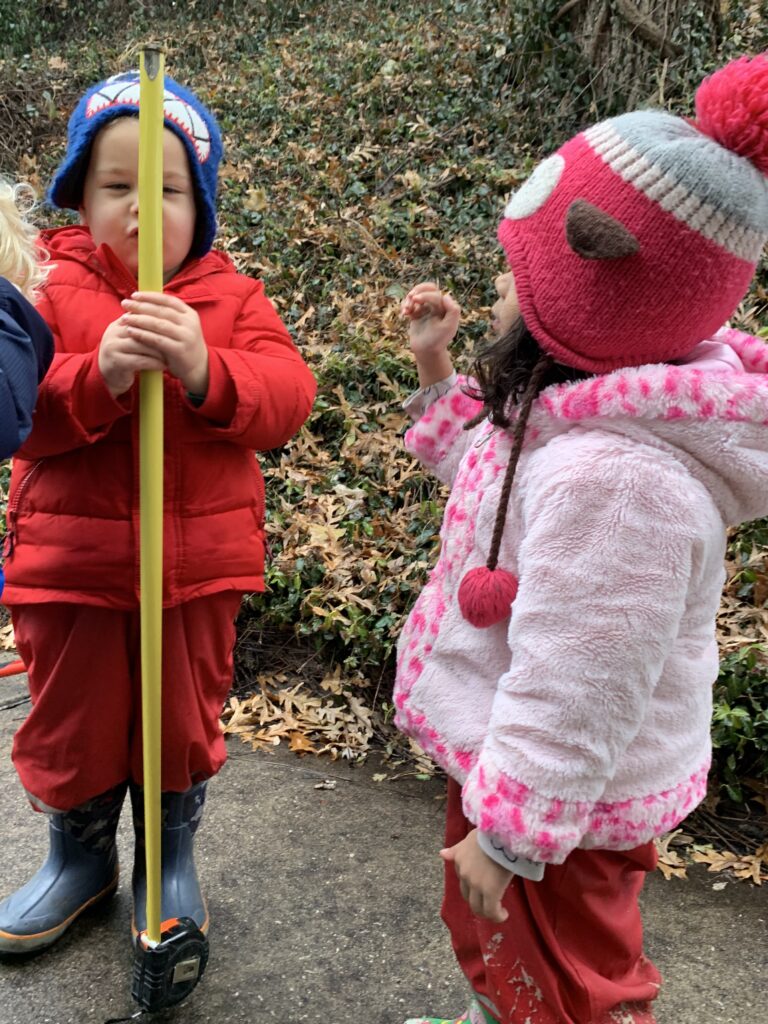
"Fatima, look how many numbers big I am!" Harry exclaims.
"How many? How many?" asks Fatima.
"I don't know," Harry counters, "but it's a lot!"
"A lot more than me," admits Fatima. "You are bigger than me!"
There's nothing like a tool in the hands of young friends to get the juices flowing and the neurons firing!
This is playful STEM exploration—learning that is pursued for no other purpose than the sheer joy and fun it brings. Observing, measuring, comparing, and analyzing helps young children make sense of their world.
This authentic, hands-on moment is an enjoyable way for young children to develop and practice their science, technology, engineering, and math skills while gaining insights into important STEM concepts.
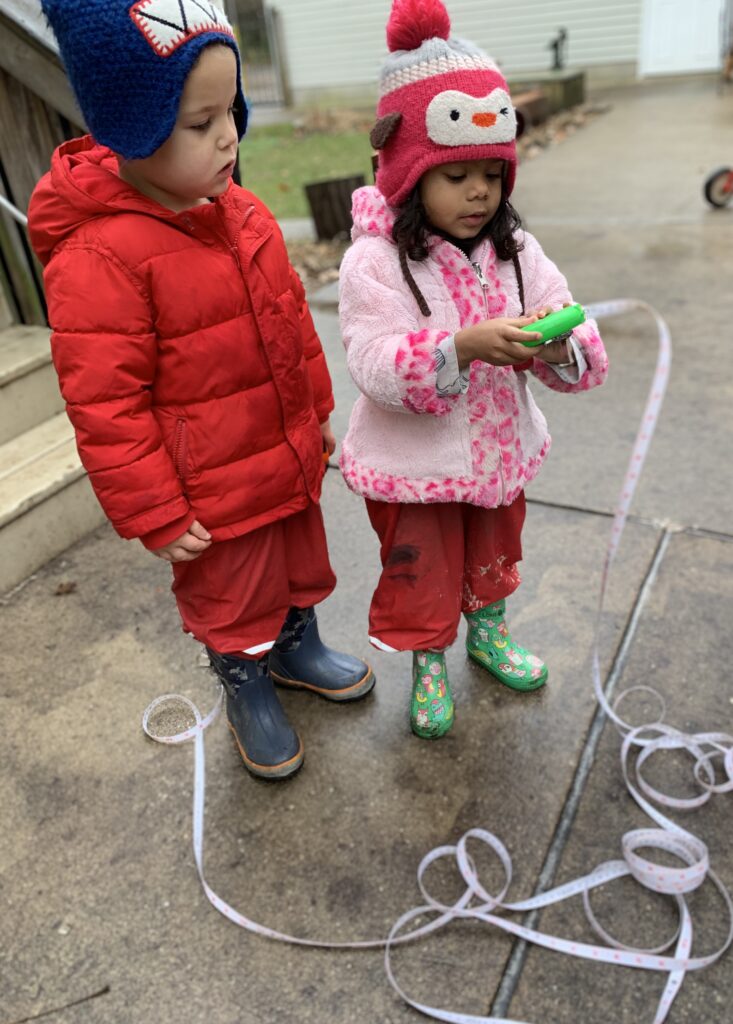
Children love scientific investigations that involve the use of real tools. We have many different types of tape measures, but the small ones are our favorites. They're easy for early learners to use because they fit perfectly into their child-sized palms. The measuring tape can be pulled out without snapping back and hurting little hands. The children can push a button on the side and the tape will retract slowly. These little wonders are small enough to fit in a pocket and light enough to throw in a backpack to use during a hike.
When early learners begin to measure their world, they develop rudimentary skills in science, technology, engineering, and math. It doesn't matter if they understand the concept of inches or feet or if they recognize the numbers. It doesn't even matter if the numbers on their measuring tapes are facing up or down! Although it may be a while before they master the skill of measuring with standard units such as inches on a tape measure, these engineering explorers are already noticing differences in size, distance and speed.
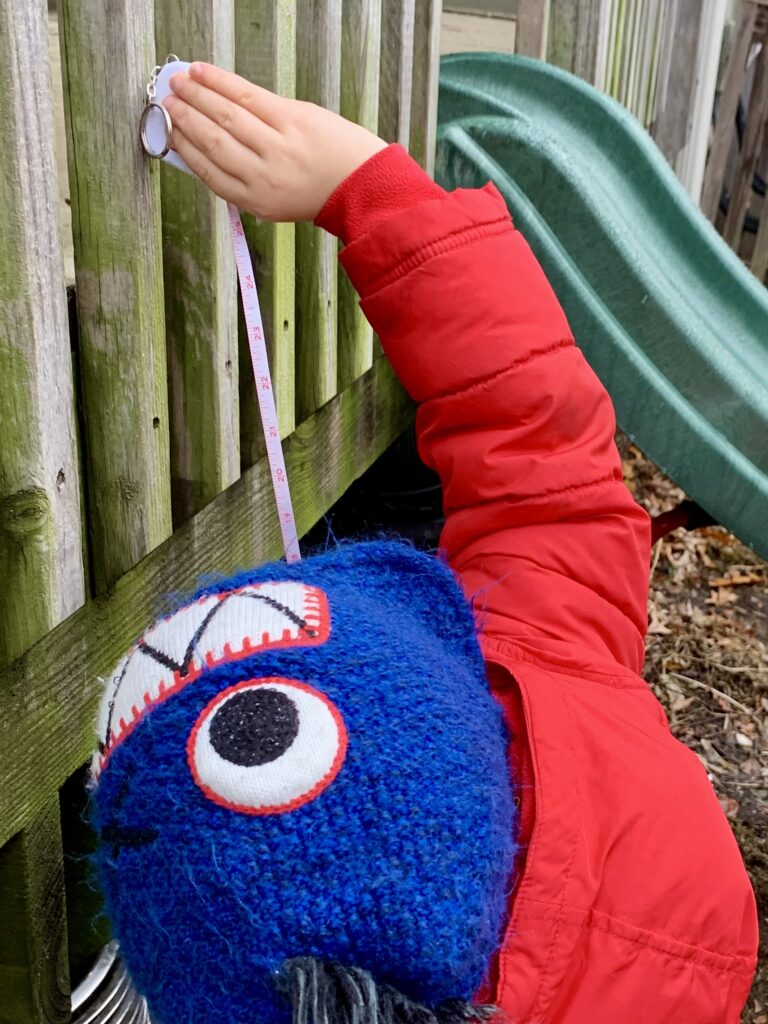
As the children measure every object in sight, I find opportunities to deepen their learning and introduce new vocabulary. Vocabulary words are flying through the air as the children investigate and learn through play. I hear words such as longer, shorter, taller, smaller, bigger, and wider.
By introducing the language for measurement and looking for everyday ways to talk about measurement, you can help support a child's scientific and mathematical understanding.
Engineers use measurement every day to make sure their designs, products and processes are safe for us to use. Civil and architectural engineers use measurements to build skyscrapers. Biological engineers measure very small objects such as the diameter of cells.
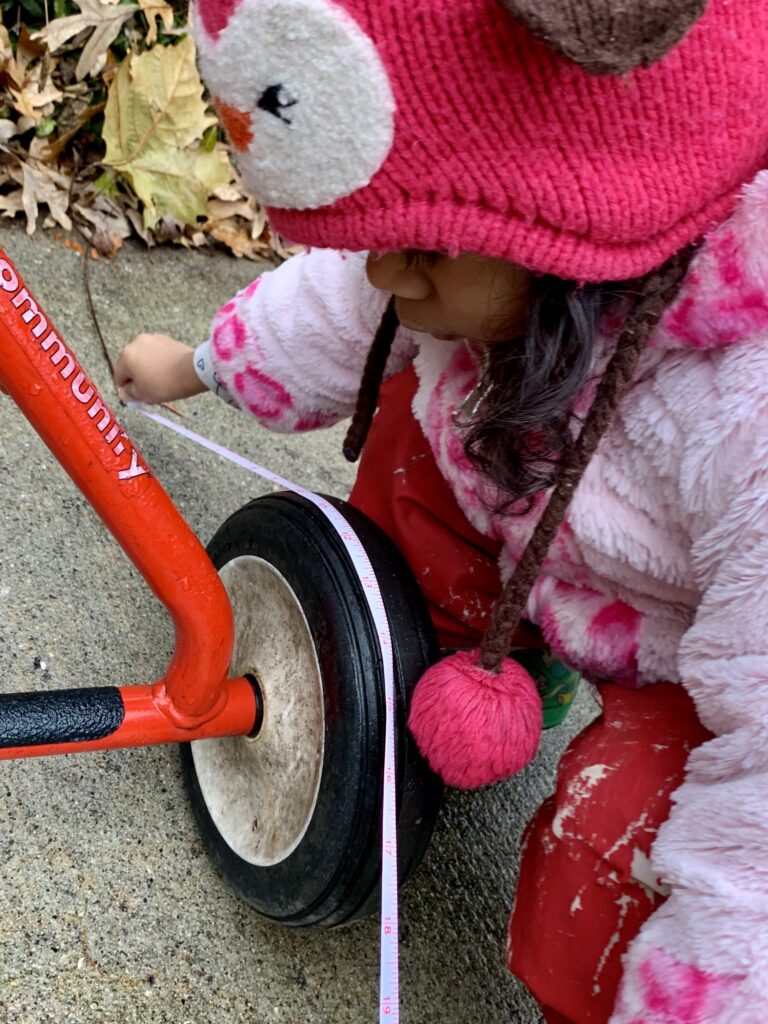
Children have an innate drive to explore and make sense of the world around them. We can set the stage for children to become curious and confident young scientists by sharing in their interest and excitement and providing opportunities for them to engage in the practices of science.
Children who participate in active investigations to learn about their environment and experiences are engaging in the same work as scientists and engineers.
We can discuss the word "inch." We can count the numbers on the measuring tape. I often refer to this approach as "throwing seeds into the wind." Some seeds may land, and some may sprout. Some may fly in one ear and out the other. I throw the seeds of learning out anyway. Then, I observe the children. When they are ready to absorb more information, I throw out more seeds!
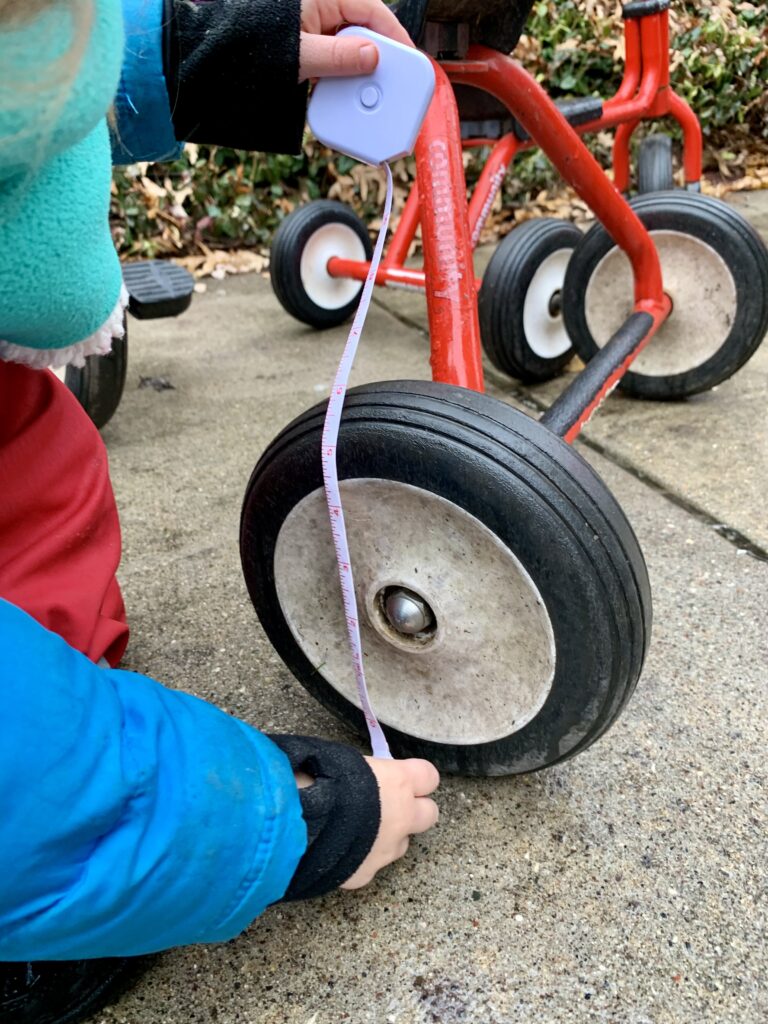
“Hey! You guys are measuring the bike tires in different ways," Michella observes. "How many numbers are on your bike tire? Can you measure the tire in the front? It is bigger."
The children are asking questions, investigating and testing out their hypotheses to find answers. Conversations like these allow the children to begin to construct new ways of thinking by talking about their experiences with other children and interested adults.
Just like scientists, early learners can make careful observations, collect and record data, and share their findings with others. So grab some tape measures, head outside with your early STEM explorers, and let the engineering adventures begin!
If you would like to expand on this activity, Engineering Explorers has some great lesson plans ready for you to use in your classroom. Check out our Measuring With LEGO Bricks lesson plan to challenge your future engineers!